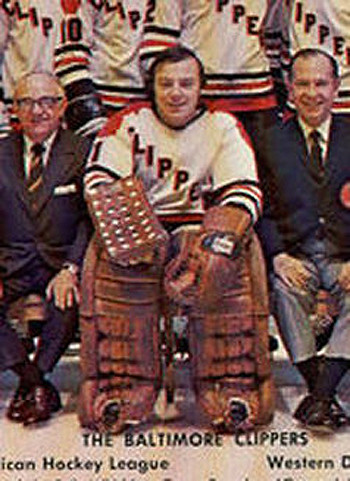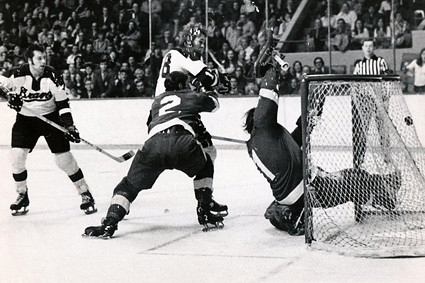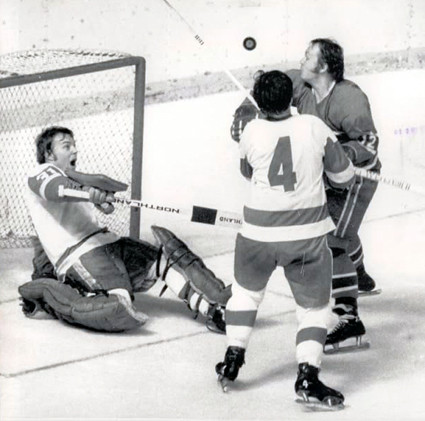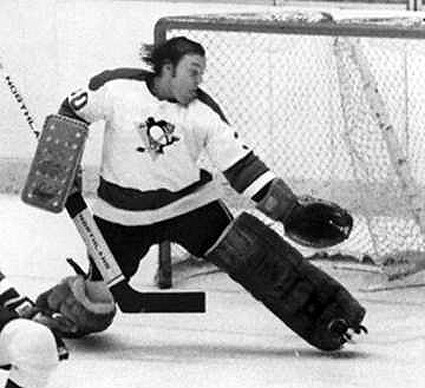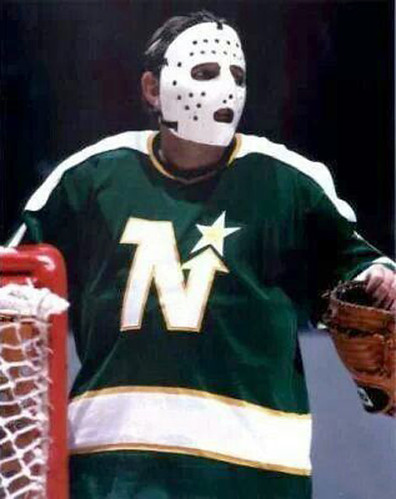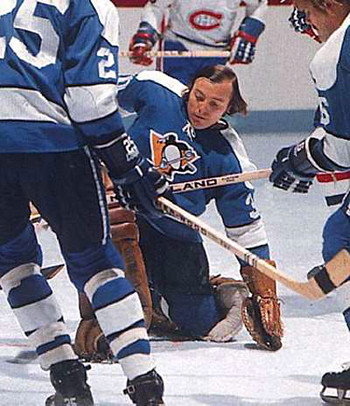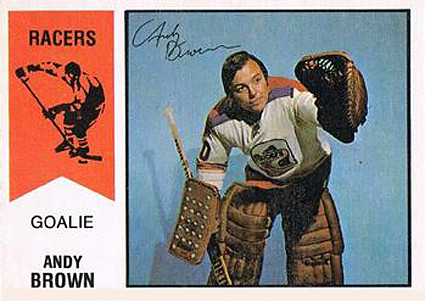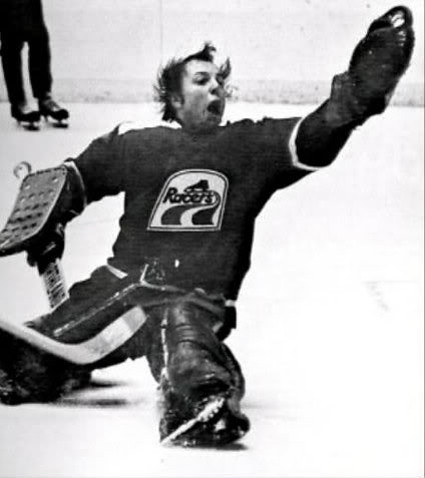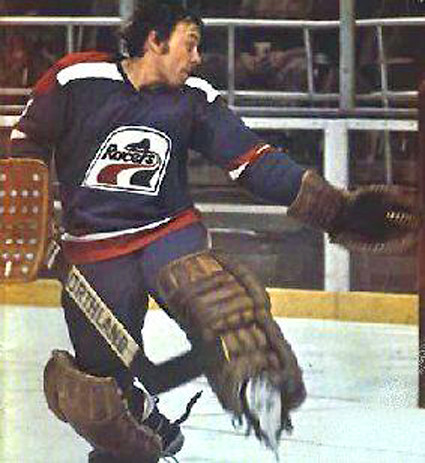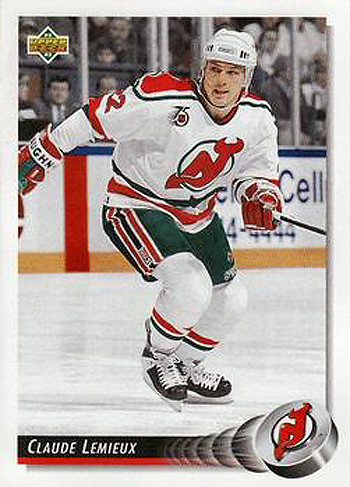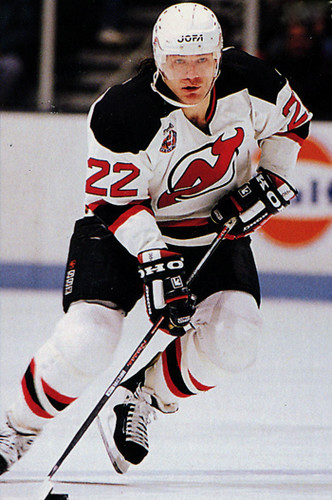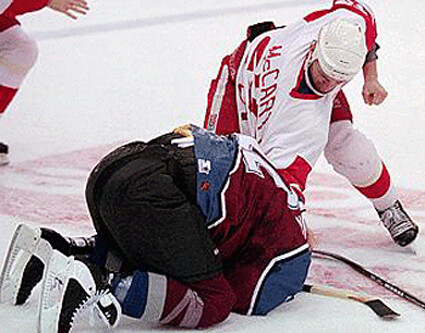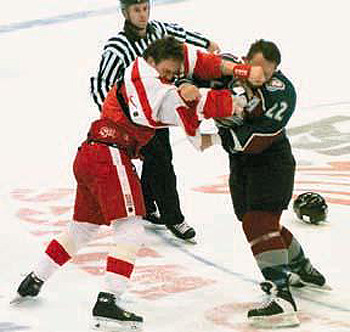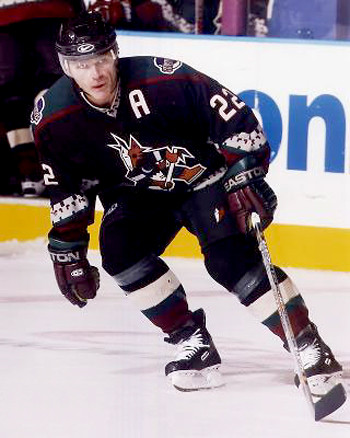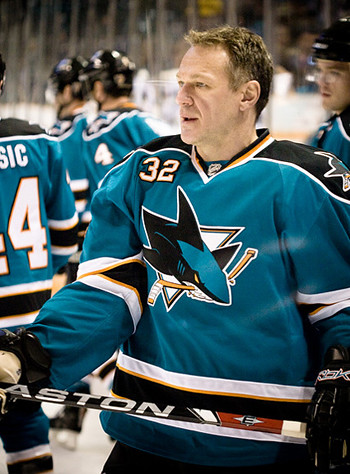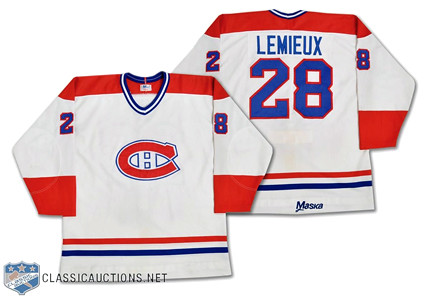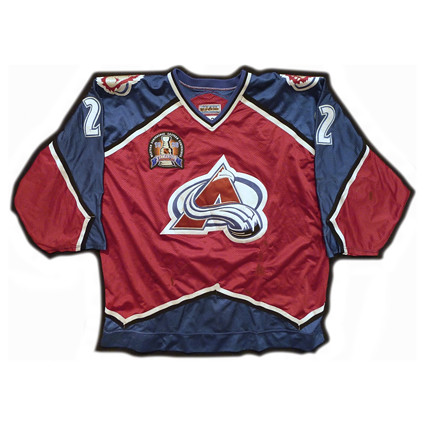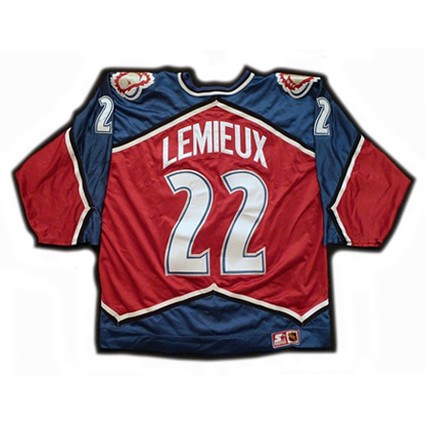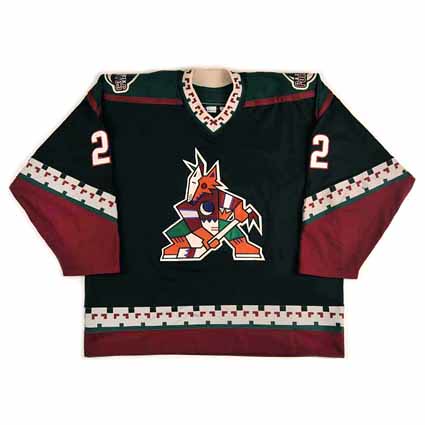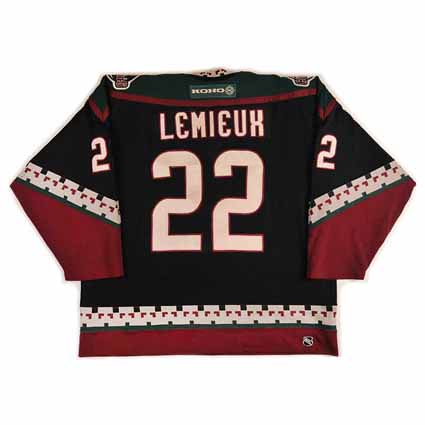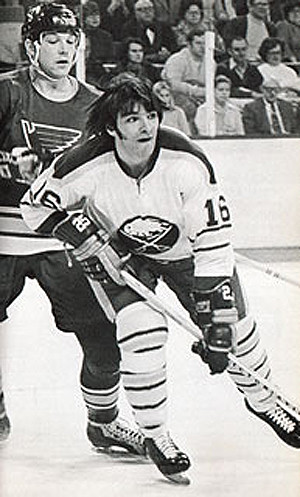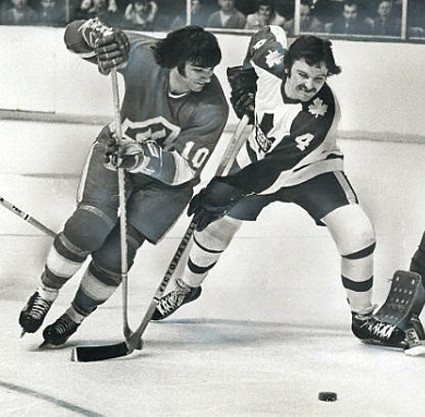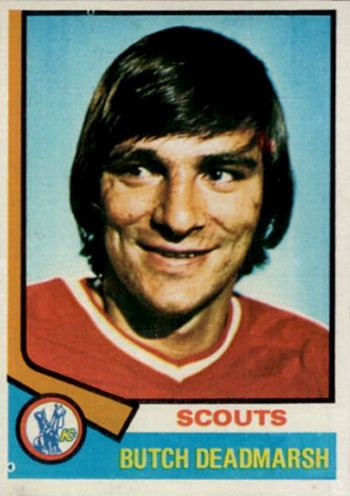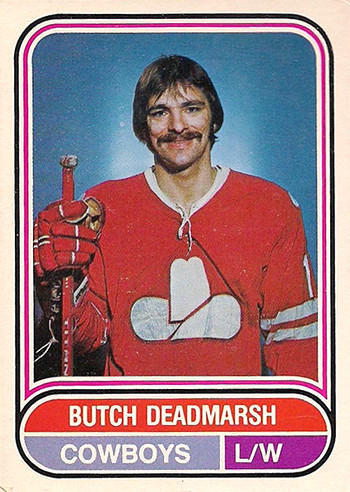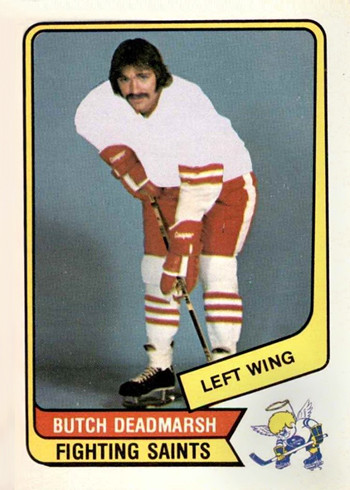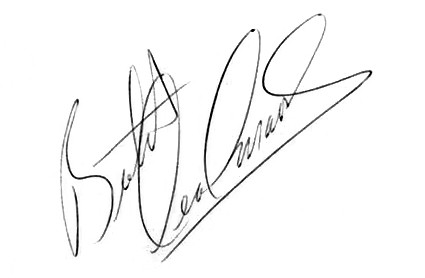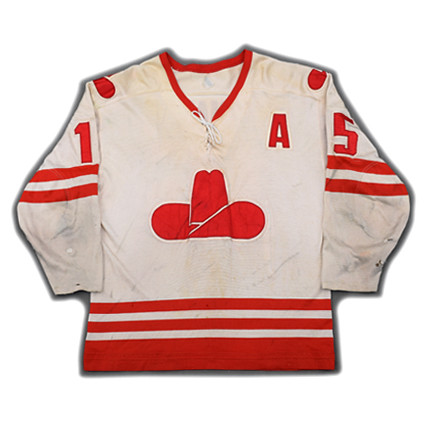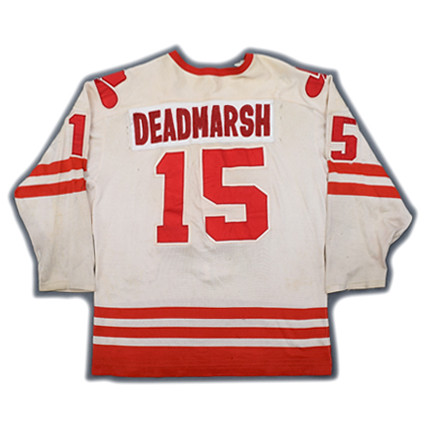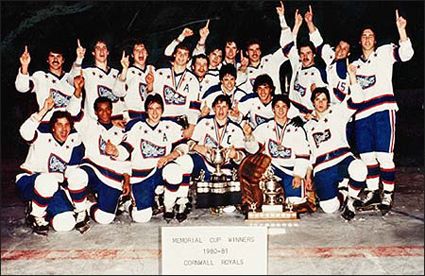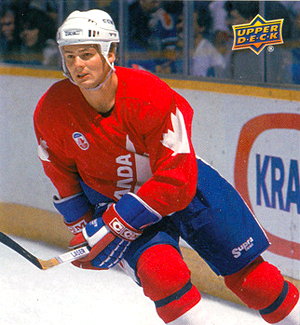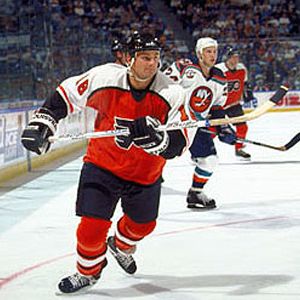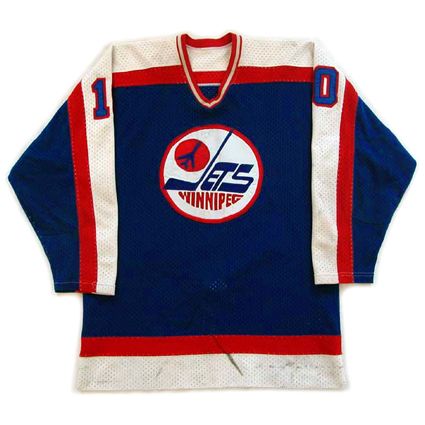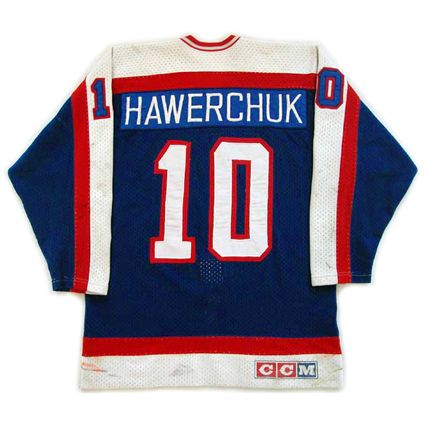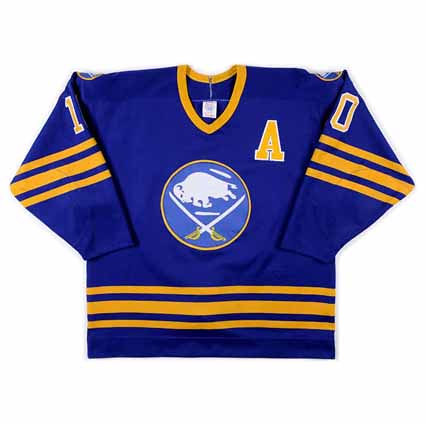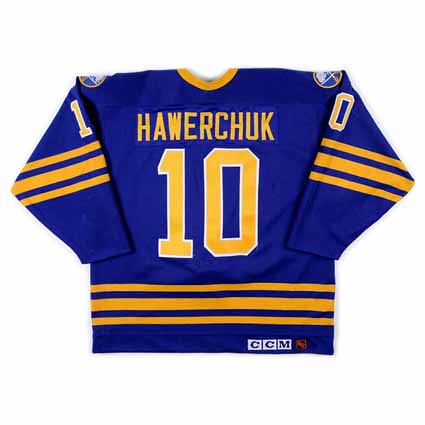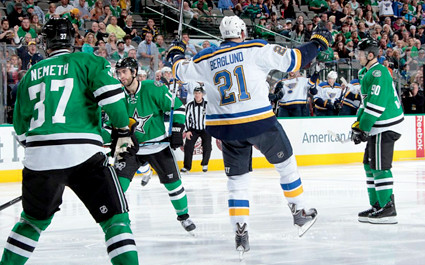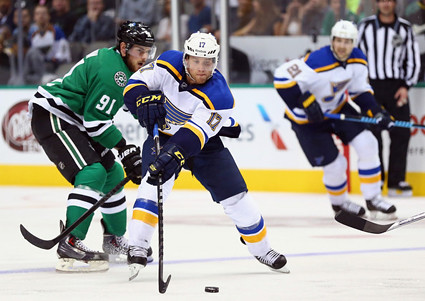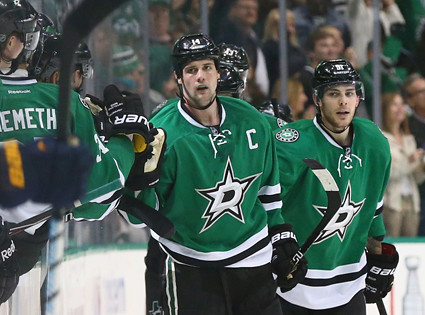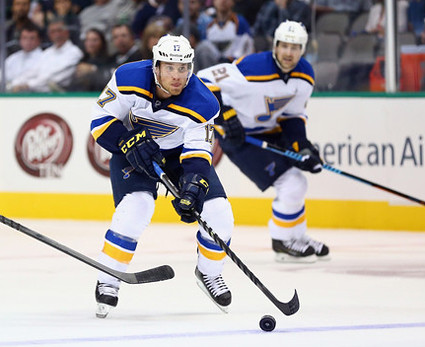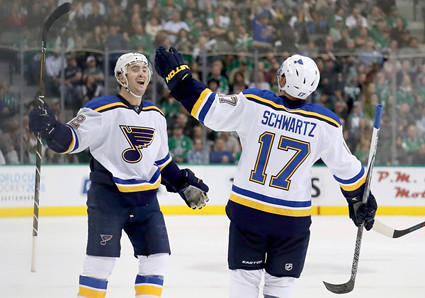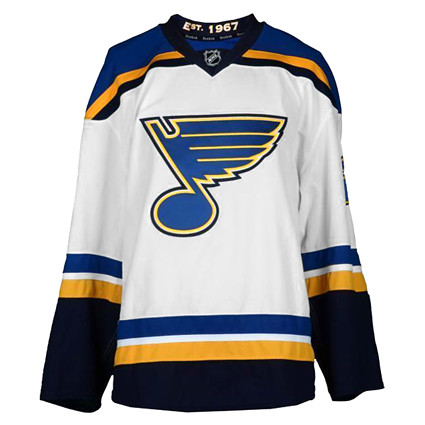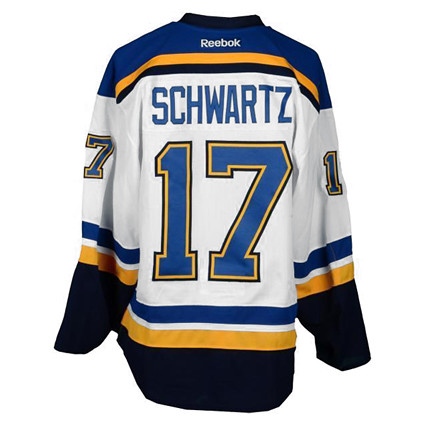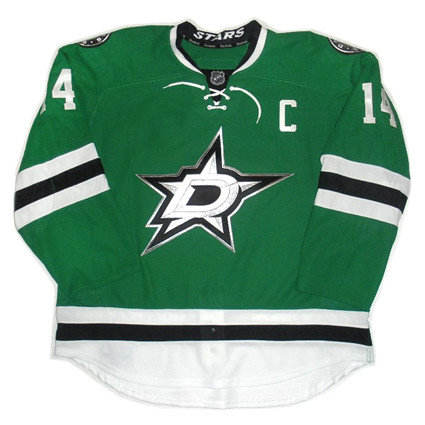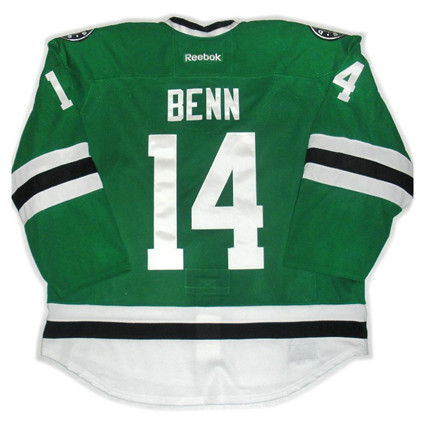Hate him or love him,
Claude Lemieux is one of the most polarizing, yet accomplished players in NHL history.
His junior hockey resume begins with the Trois-Rivieres Draveurs of the Quebec Major Junior Hockey League for the 1982-83 season when Lemieux scored 28 goals and 66 points in 62 games while announcing his presence with 213 penalty minutes. Lemieux was then drafted 26th overall by the Montreal Canadiens during the 1983 NHL Entry Draft.
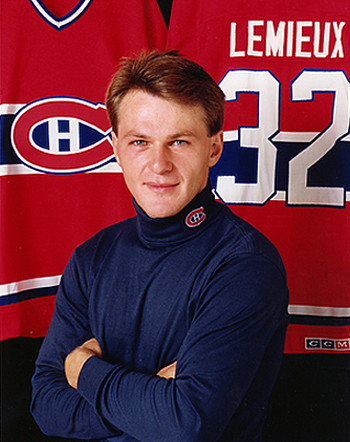 Lemieux was drafted in 1983 by the Montreal Canadiens
Lemieux was drafted in 1983 by the Montreal Canadiens
He returned to junior hockey for the 1983-84 season, now with the Verdun Juniors. His rugged style of play was still in full effect, as he amassed 227 penalty minutes in 51 games played while raising his offensive game to a new level with 41 goals and 45 assists for 86 points, more than a point and a half per game. He also made his NHL debut with the Canadiens that season, seeing action in 8 games with a goal and an assist. He also appeared in two playoff games for the Nova Scotia Voyageurs of the American Hockey League after scoring 20 points in 9 playoff games for Verdun.
He returned to Verdun once more for the 1984-85 season, now as the team captain. He lit up the scoreboard with 58 goals and 66 assists for 124 points in 52 games and continued his torrid pace in the postseason with 23 goals and 40 points in just 14 playoff games, which earned him the Guy Lafleur Trophy as the QMJHL Playoff MVP.
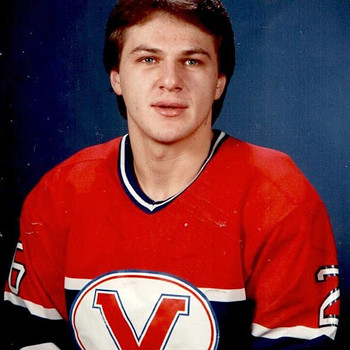 Lemieux was the playoff MVP for Verdun in 1985
Lemieux was the playoff MVP for Verdun in 1985
That season Lemieux also made his international debut for Canada at the 1985 World Juniors, scoring 3 goals and 5 points in 6 games as Canada captured the gold medal.
Lemieux continued to develop during the 1985-86 season with 58 games with the Sherbrooke Canadiens of the AHL, scoring 21 goals and 53 points in 58 games. He also played ten games with Montreal in the NHL with a goal and an assist before becoming a vital member of the club during the playoffs where he scored an eye opening 10 goals in 20 games, with four of those goals being game winners as Montreal would win the first Stanley Cup of his career.
 Lemieux won the Stanley Cup with Montreal in 1986
Lemieux won the Stanley Cup with Montreal in 1986
That performance led to Lemieux playing full time for the Canadiens in the 1986-87 season, playing in 76 games with 27 goals and 53 points. Montreal went on another extended playoff run, with Lemieux scoring 13 points in 17 games. He was also named to the squad of NHL All-Stars who took on the Soviet Union in the two game Rendez-vous '87 that took the place of the traditional NHL All-Star Game that season.
Before the start of the next NHL season, Lemieux once again suited up for Canada, this time at the 1987 Canada Cup, where he contributed a goal and an assist in 6 games as Canada would defeat the Soviet Union in a three game final to win the tournament.
Lemieux would play three more seasons for Montreal, which included reaching the 30 goal mark for the first time with 31 in 1987-88. Montreal again reached the Stanley Cup Finals in 1989 before falling in seven games to the Calgary Flames. His final season with Montreal was ruined by an abdominal strain just as the season was getting underway which limited him to 39 games.
Before the start of the 1990-91 season, Lemieux was traded to the New Jersey Devils for
Sylvain Turgeon and erased any doubts he was back to full health by playing in 78 games while scoring 30 goals for the second time. He has his first 40 goal season in 1991-92 with 41 in 74 games.
Lemieux scored 40 goals during the Devils final season in red and green jerseys
In 1992-93, Lemieux again reached the 30 goal mark while he set career highs with 51 assists and 81 points to lead the Devils in scoring for the second consecutive season.
Lemieux set a career high in points in 1992-93 in the Devils new red and black jerseys
While he was limited to 18 goals and 44 points in 1993-94, the Devils made it to the Conference Finals before losing in overtime of Game 7 in an epic series against the eventual champion New York Rangers.
The 1994-95 season was delayed by labor problems, but once the postseason got underway, Lemieux's game came to life and he scored 13 goals and 16 points in 20 playoff games as the Devils won the Stanley Cup, with Lemieux being named the winner of the Conn Smythe Trophy as the playoff MVP.
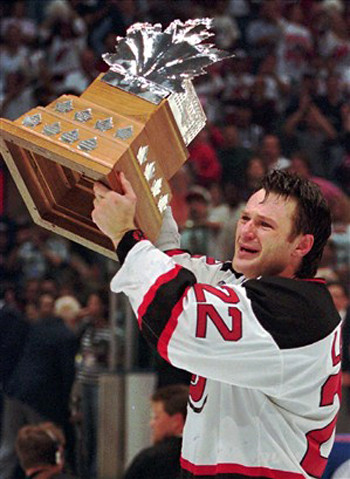 Lemieux won the Conn Smythe Trophy as the 1995 Playoff MVP
Lemieux won the Conn Smythe Trophy as the 1995 Playoff MVP
Winning the cup would prove to be Lemieux's final game with New Jersey, as he was involved in a three way trade that saw him wind up being traded to the Colorado Avalanche for their first season of play after the Quebec Nordiques were relocated to Denver.
The Nordiques were a talented team on the rise before moving to Colorado, but the arrival during the season of goaltender
Patrick Roy elevated the club to another level. Additionally, playing with the likes of
Joe Sakic and
Peter Forsberg revitalized Lemieux's offensive game, as he immediately scored 39 goals and 71 points, both the second highest of his career.
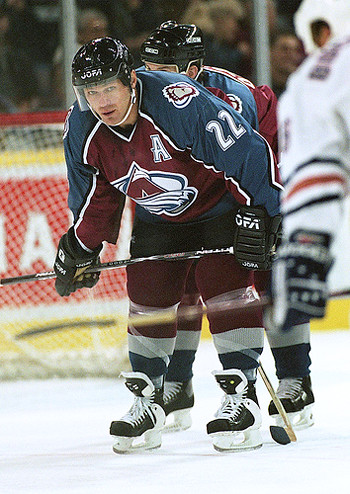 After winning a Stanley Cup and Conn Smythe,
After winning a Stanley Cup and Conn Smythe,
the Devils traded Lemieux to the Avalanche
In the playoffs, Colorado eliminated the Vancouver Canucks, Chicago Blackhawks and began an intense rivalry with the Detroit Red Wings before sweeping the upstart Florida Panthers in four games to win Lemieux's second consecutive Stanley Cup, making him just the fifth player to ever win back-to-back cups with two different teams.
The flash point of the Avalanche rivalry with the Red Wings can be traced back to a check from behind by Lemieux on Detroit's
Kris Draper, who smashed face first into the top edge of the boards, breaking his jaw, nose and cheekbone which resulted in a concussion and facial reconstructive surgery. Lemieux was suspended for two games by the NHL, while many felt the severity of the incident deserved a harsher penalty. The animosity was genuine between the two clubs, as voiced by Detroit's
Dino Ciccarelli, who lamented after the series, "I can't believe I shoot that guy's firggin' hand after the game. That pisses me right off."
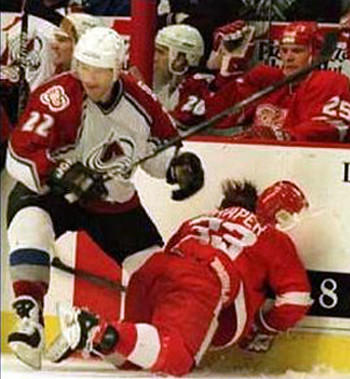 Draper falling to the ice after being nailed by Lemieux
Draper falling to the ice after being nailed by Lemieux
In the fall of 1996, Lemieux was once again called upon by Canada, this time for the 1996 World Cup of Hockey.
Lemieux was limited by injuries in 1996-97, but once again rose to the moment in the playoffs. After scoring 11 goals in 45 regular season games, he scored 13 goals in 17 playoff games. The Red Wings were also gunning for Lemieux during the regular season. During their fourth meeting on March 26, 1997, the Red Wings
Darren McCarty suckerpunched Lemieux with a right hook, ripped his helmet off and rained blows on Lemieux, who covered up after the sneak attack. McCarty then drilled Lemieux repeatedly with violent punches before dragging him over to the boards and kneeing him in the head before the officials restrained him.
McCarty's attack on Lemieux in retribution for his hit on Draper
This fight also led to numerous other brawls, most notably when goaltenders Roy and
Mike Vernon staged a slugfest at center ice which left Roy bloodied. Appallingly, McCarty would only receive a double minor for roughing for his attack which would have landed anyone else in jail had it happened in public.
Lemieux would fight McCarty again right off the opening faceoff on a game on November 11, 1997, as McCarty would change move from right wing to left wing to line up opposite McCarty for a chance to restore his reputation after being accused of "turtling" when he covered up after being flattened by McCarty's sneak attack the previous March.
Lemieux and McCarty fought again for a second time
in one of hockey's all-time best rivalries
Lemieux would go on to score 26 goals and 53 points that season while the Avalanche and Red Wings would engage in another bout of mayhem when late in the season the two teams would stage another brawl that featured goaltenders Roy and
Chris Osgood.
After playing a full season of 82 games with 27 goals and 51 points, Lemieux and the Avalanche would make it to the Conference Finals, but fall to the eventual champion Dallas Stars.
After 13 games of the 1999-00 season, Lemieux was traded back to New Jersey, where he scored 17 goals and 38 points in 70 games, which included Lemieux playing in his 1,000th NHL game on this date in 2000 against the Buffalo Sabres. The Devils qualified for the playoffs, Lemieux's 15th consecutive postseason dating back to 1986. New Jersey swept Florida, defeated the Toronto Maple Leafs in 6, outlasted the Philadelphia Flyers in 7 and won the third Stanley Cup of Lemieux's career by defeating Dallas in 6 games.
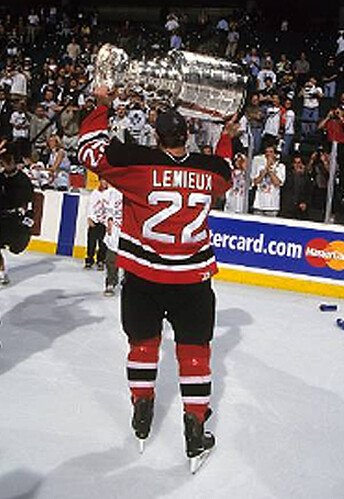 Lemieux won his fourth Stanley Cup in 2000
Lemieux won his fourth Stanley Cup in 2000
Once again, lifting the cup brought a close to his time in New Jersey, as Lemieux signed as a free agent with the Phoenix Coyotes for the 2000-01 season. He would play in just 46 games for the Coyotes that season before returning to play a full schedule of 82 games in 2001-02, scoring 41 points.
Lemieux signed as a free agent with Phoenix
He would return to Phoenix for a third season, but after 36 games, he was traded to the Stars where he would play the final 32 games of his NHL career.
Lemieux did play in 7 games with EV Zug in Switzerland in 2003-04 as well as 5 playoff games to close out his career.
Or so we thought...
After four full seasons away from the ice, Lemieux unexpectedly made a comeback at the age of 43! Oddly, Lemieux played pair of games with the China Sharks of the Asian Hockey League and then 23 games with the Worcester Sharks of the AHL before being recalled by the San Jose Sharks, returning to the NHL for the first time in nearly six years. He would play 18 games with San Jose with one assist and 21 penalty minutes before retiring for a second time that summer.
Seemingly out of nowhere, Lemieux was back in the NHL with the Sharks
Lemieux would play in the NHL playoffs 18 of his 19 seasons, playing in 234 postseason games with 80 goals, 78 assists and 158 points as well as 529 penalty minutes. His 234 games played are fourth all-time and his 19 game winning goals in the playoffs are second only to
Wayne Gretzky's 24. His 80 playoff goals rank ninth all-time.
Lemieux would finish with 1,215 games played with 379 goals and 407 assists for 786 points with 1,777 penalty minutes. He would win a Conn Smythe Trophy in 1995 and four Stanley Cups with Montreal in 1986, New Jersey in 1996, Colorado in 1996 and the Devils again in 2000.
Today's first featured jersey is a
1983-84 Montreal Canadiens Claude Lemieux jersey from his rookie season.
Today's second featured jersey is a
1995-96 Colorado Avalanche Claude Lemieux jersey worn during the 1996 Stanley Cup Finals.
The Avalanche would burst onto the scene with unique jerseys with zig-zag arm and waist stripes that mimicked a mountain range and a unique burgundy and blue color scheme, unlike anything that has ever been worn in the NHL. They would win a pair of Stanley Cups in this style which would be used all the way through the 2006-07 season.
Today's third featured jersey is a
1999-00 New Jersey Devils Claude Lemieux jersey worn during the 2000 Stanley Cup Finals.
The Devils would still be wearing their original red and green jerseys during Lemieux's first two seasons until changing to their new red and black colors for the 1992-93 season. They would win three Stanley Cups to date in this style jersey, which remains in use unchanged through today, surviving the change to the Reebok Edge jerseys in 2007-08, which killed off many styles, including those worn above by the Avalanche.
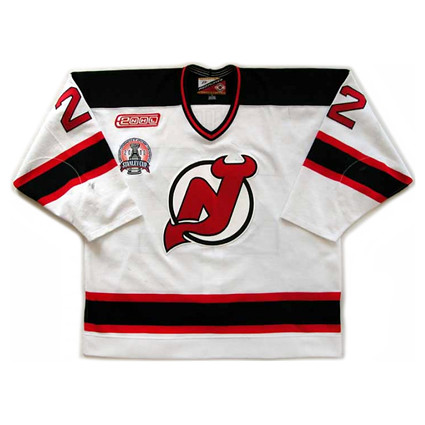
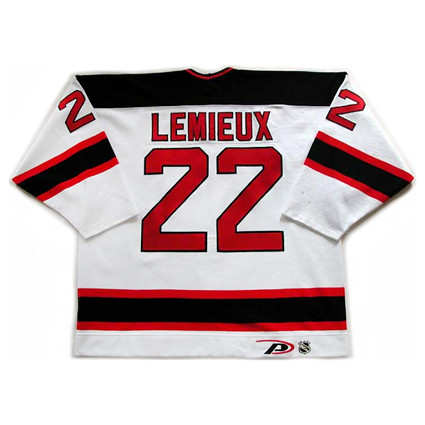
Bonus jersey: Today's bonus featured jersey is a
2000-01 Phoenix Coyotes Claude Lemieux jersey. When the Winnipeg Jets relocated to Phoenix for the 1996-97 season, they turned the hockey world on its ear with these unusual jerseys with Southwest inspired colors and Native American striping patterns in addition to their somewhat busy and rather bizarre logo, not to mention their unique choice of font for the names and especially numbers.
This style was worn for 12 seasons until a complete, and we mean
complete overhaul of their identity package when they moved into their new arena, which changed the team colors, logo and, of course, their jerseys, bringing an end to the era of their highly unique and unusual original jerseys.
With this being the 20th Anniversary of the Coyotes, the team revived their original black jerseys for two games as celebratory throwbacks.
In today's video section, we hope you have some time on your hands today, as McCarty and Lemieux meet up for the first time ever to discuss the incident and what led up to it, thirteen years after the incident. It's a fascinating insight into "The Code" among hockey players and the mindset of both McCarty and Lemieux both then and now and the respect they have for each other. It's quite possibly the most interesting interview we've ever posted on
Third String Goalie.

